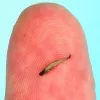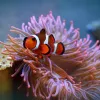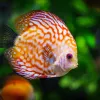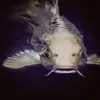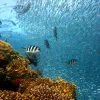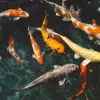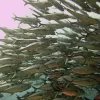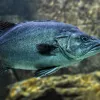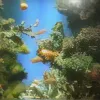Important update from TheSchoolRun
For the past 13 years, TheSchoolRun has been run by a small team of mums working from home, dedicated to providing quality educational resources to primary school parents. Unfortunately, rising supplier costs and falling revenue have made it impossible for us to continue operating, and we’ve had to make the difficult decision to close. The good news: We’ve arranged for another educational provider to take over many of our resources. These will be hosted on a new portal, where the content will be updated and expanded to support your child’s learning.
What this means for subscribers:
- Your subscription is still active, and for now, you can keep using the website as normal — just log in with your usual details to access all our articles and resources*.
- In a few months, all resources will move to the new portal. You’ll continue to have access there until your subscription ends. We’ll send you full details nearer the time.
- As a thank you for your support, we’ll also be sending you 16 primary school eBooks (worth £108.84) to download and keep.
A few changes to be aware of:
- The Learning Journey weekly email has ended, but your child’s plan will still be updated on your dashboard each Monday. Just log in to see the recommended worksheets.
- The 11+ weekly emails have now ended. We sent you all the remaining emails in the series at the end of March — please check your inbox (and spam folder) if you haven’t seen them. You can also follow the full programme here: 11+ Learning Journey.
If you have any questions, please contact us at [email protected]. Thank you for being part of our journey it’s been a privilege to support your family’s learning.
*If you need to reset your password, it will still work as usual. Please check your spam folder if the reset email doesn’t appear in your inbox.
Fish
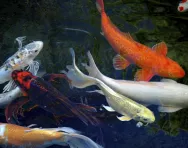
Fish belong to a class of creatures called aquatic vertebrates. Their combination of gills, fins and the fact that they live only in the water make fish different from all other animals. Most fish have a skeleton made of bone but some, like sharks, have a skeleton made of cartilage.
Fish spend all their lives in the water and are cold-blooded with the exception of Tuna family and the Mackerel shark family.
Scientists believe that there are more than 25,000 different species of fish in the world, although it’s hard to be completely accurate, as there are still parts of our oceans which remain unexplored – there could be species of fish which we don’t know about!
There are three major types or classes of fish: jawless, cartilaginous, and bony fish. An example of a jawless fish is the lamprey eel. Sharks are cartilaginous fish and the blue marlin is a bony fish.
Fish vary in colour and size. Fish can be as large 40ft long and as small as 1/2 inch long. There are some animals that live in the water and we may think of as fish, but really aren't classified by scientists as fish. These include whales, dolphins, octopus, and jellyfish.
Top 10 facts
- Fish have gills that extract oxygen from the water around them.
- The collective name for a group of fish is a ‘shoal’ or a ‘school’.
- Fish have been around for about 500 million years, which is longer than dinosaurs.
- There are an estimated 25,000 different species identified today, with an estimated 15,000 more yet to be discovered.
- Relative to their body size, fish have small brains compared to most other animals.
- Fish are covered in scales which are often covered in a layer of slime to help their movement through water.
- Cleaner fish help out other fish by removing parasites and dead skin from their scales.
- Although jellyfish and crayfish have the word ‘fish’ in their name, they aren’t actually fish.
- Over 1000 fish species are threatened by extinction.
- The Whale Shark is the largest member of the fish family.


Boost Your Child's Learning Today!
- Start your child on a tailored learning programme
- Get weekly English & maths resources sent direct to your inbox
- Keep your child's learning on track
Did you know?
- Some flatfish use camouflage to hide themselves on the ocean floor.
- Tuna can swim at speeds of up to 70 kph (43 mph).
- A study has concluded that fish cannot feel pain. The part of the brain we use to feel pain does not exist in fish.
- Most fish do not have eyelids. This is one reason why some species seek shade. Studies have shown that certain fish will use the shade cast from a single blade of grass to cover their eyes. One exception are sharks, who do have eyelids. If a shark gives you a wink, that might just be a sign to exit the water!
- Although fish live in water, they can still drown. A fish’s gills extract oxygen from the hydrogen in water molecules, balancing the two components. When a fish is removed from its element and exposed only to air, its gills are unable to control this delicate balance. It inhales a lethal overdose of oxygen essentially killing the fish by “drowning”.
- Some fish can actually fly! They are pelagic fish found in tropic seas. Although they fly, they do not actually flap their "wings" (enlarged pectoral fins). The fins are extended once the fish is in the air and used to help it glide greater distances, the average being up to several hundred feet. Flying fish typically travel a metre or so above the water and remain in the air for 5 to 10 seconds.
Look through the gallery and see if you can spot the following:
- A Dwarf Pygmy Goby is the smallest! member of the fish family
- A whale shark is the largest!
- A clownfish
- Some fish are beautiful
- Others, like the catfish, are not so beautiful!
- A seahorse is a fish!
- Some people keep beautiful tropical fish as pets
- A bear fishing for wild salmon
- A shoal of fish
- Koi carp are kept in garden ponds
- Schooling, swimming together in large numbers, helps keep fish safe from predators
- Can you spot the fish's gills?
- Fish scales shining in the light
Gallery
About
Fish live in nearly every large body of water in the world including streams, rivers, ponds, lakes, and oceans.
Some fish live on the surface of the water and some live in the very depths of the ocean.
There are fish that live in fresh water and others that live in salt water.
Some fish eat plant life. They may scrape algae off rocks or eat plants that grow in the ocean or sea. Some fish, called predators, prey on other fish and animals. The shark is a noted predator that hunts for prey. Other predators lay in wait for their prey by hiding in the sand or rocks in order to ambush their prey. Of course, fish themselves are considered to be prey for other creatures – North American bears often go fishing for wild salmon, and some humans are very fond of fish with chips!
Fish often group themselves together to protect themselves from predators. When they swim together in a loose formation, it is called a shoal. If the fish pack together more tightly, it’s called a school. If the school is threatened, it may make several sudden changes of direction in order to confuse a predator, and hopefully escape.
A lot of people like to have fish as pets. There are special aquariums and food you can get to take care of your fish. They can be fun to have and also beautiful to look at. Although they are fairly easy to take care of as pets, you will need to do some work. You need to keep the aquarium clean and make sure to feed your fish the proper amount each day.
The largest fish is the great whale shark which can reach more than fifty feet in length. The smallest fish is the Dwarf Pygmy Goby, which is less than 1/3 of an inch when fully grown. Some species of fish can fly (glide), others can skip along the surface, and others can even climb rock! Fish have a specialised sense organ called the lateral line which works much like radar and helps them navigate in dark or murky water.
Words to know:
algae – part of a group of organisms that live mainly in water and includes the seaweeds. Algae differ from plants in not having true leaves, roots, or stems.
aquariums – a water-filled transparent container, often box-shaped, in which fish and other water animals and plants are kept
aquatic – connected with, consisting of, or dependent on water
camouflage – the devices that animals use to blend into their environment in order to avoid being seen by predators or prey, especially colouration
cartilage – strong elastic tissue in the body
cold-blooded – describes an animal with an internal body temperature that varies according to the temperature of the surroundings
extinction – the gradual process by which a group of related organisms dies out
fins – a flexible organ, sometimes paddle-shaped or fan-shaped, extending from the body of a fish or other water animal and helping in balance and propulsion
gills – the organ that fish and some other water animals use to breathe
oxygen – a colourless odourless gas that is essential for plant and animal respiration (breathing)
parasite – a plant or animal that lives on or in another, usually larger, host organism in a way that harms or is of no advantage to the host
predator – a carnivorous animal that hunts, kills, and eats other animals in order to survive, or any other organism that behaves in a similar manner
prey – an animal or animals caught, killed, and eaten by another animal as food
radar – a system that uses reflected radio waves to determine the presence, location, and speed of distant objects.
skeleton – the rigid framework of interconnected bones and cartilage that protects and supports the internal organs and provides attachment for muscles in humans and other vertebrate animals
species – a kind, sort, or variety of something
vertebrates – an animal with a segmented spinal column
Related Videos
Just for fun...
- Loads of marine biology games and activities
- Play fishy tic tac toe (like noughts and crosses!)
- Make your own magnetic fishing game
- Some lovely fishy crafts and activities
- Make your very own coral reef in a box
Best books about fish for children
Find out more
- The BBC Bitesize guide to fish
- Discover more about fish, take a fish facts quiz and see fish scales up close
- 63 interesting facts about fish
- Meet an ichthyologist (a scientist who studies fish)
- A guide to the creatures of the deep sea
- Find out more about seahorses
- Pictures and information about British rock pool fish
- Lots of fishy questions answered by experts
- Research news about fish from the Natural History Museum
See for yourself
- Go and see some beautiful (and not so beautiful!) fish for yourself at a visitor aquarium in the UK
- Watch the tropical reef webcam at the Tropical Reef Aquarium in Long Beach, California, USA
- Listen to recordings of fish sounds
